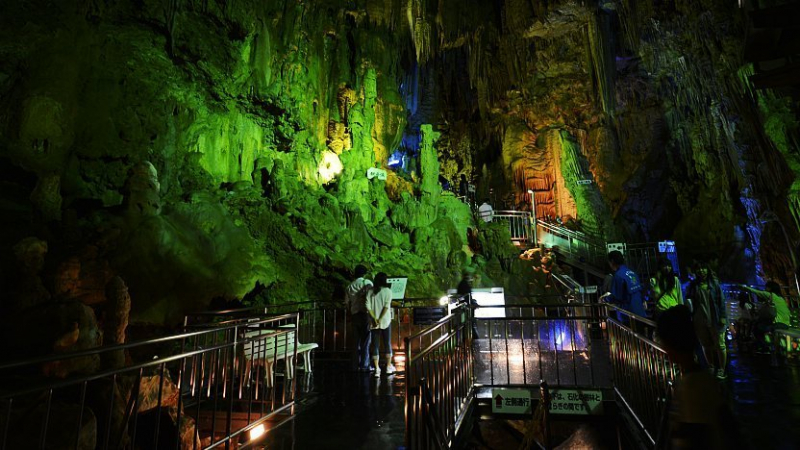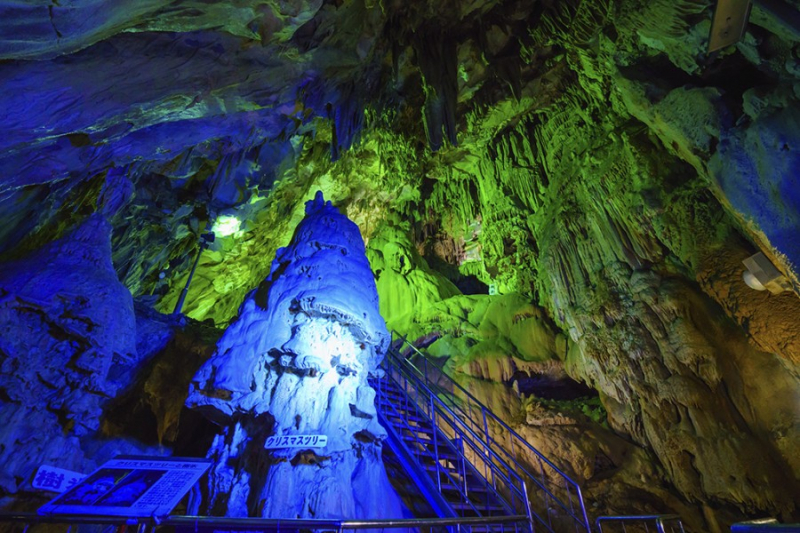Abukumado

Abubukuma-do was discovered in September 1969 near the current Busan quarry site in the Abukuma Highlands (), or Harachitai Highlands (), on the western side of Mt. Otakine, in the heart of a geologic plateau formation with irregular limestone deposits. The cave entrance was first discovered near the exit of the modern-day tourist attraction. The cave itself is made up of a 12m-deep pit, a 60-meter-long tunnel, and a 15-meter-long passage. An exploration team from a Japanese university examined the cave's interior in March 1970. They located the main cave ahead of the air hole near the northern end, which had previously been thought to be the termination point. The cave's interior was modified for observation and introduced to the public in 1973, four years after it was discovered.
Inside the cave, visitors can walk a 600-meter road and a 120-meter exploration course to see the stalactites and stalagmites. It took more than eighty million years for each stalactite to form. There are around 2,500 meters of cave beyond the public parts that are not open to the public. The smaller Irimizu Shonyu-do (- Irimizu Limestone Cave), discovered in 1927, is close to Abukuma Cave. On December 28, 1934, the Irimizu Limestone Cave was classified as a National Natural Treasure. The temperature inside Abukuma-do is at 15 °C, with a humidity level of above 90%.
Opening Hours: Mar. - Nov. 8:30am-5pm, Dec. - Feb. 8:30am-4:30pm
Open every day of the year
Admission: Adult- ¥1200, Elementary, jr. high student- ¥800, Child- ¥600
Address: 1 Takinemachi Sugaya, Tamura-shi, Fukushima (Google Map)








